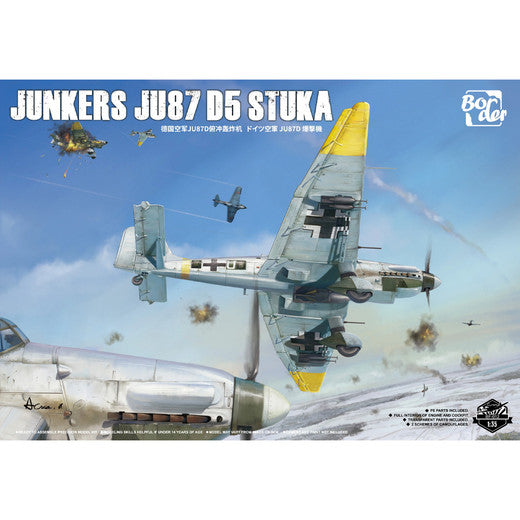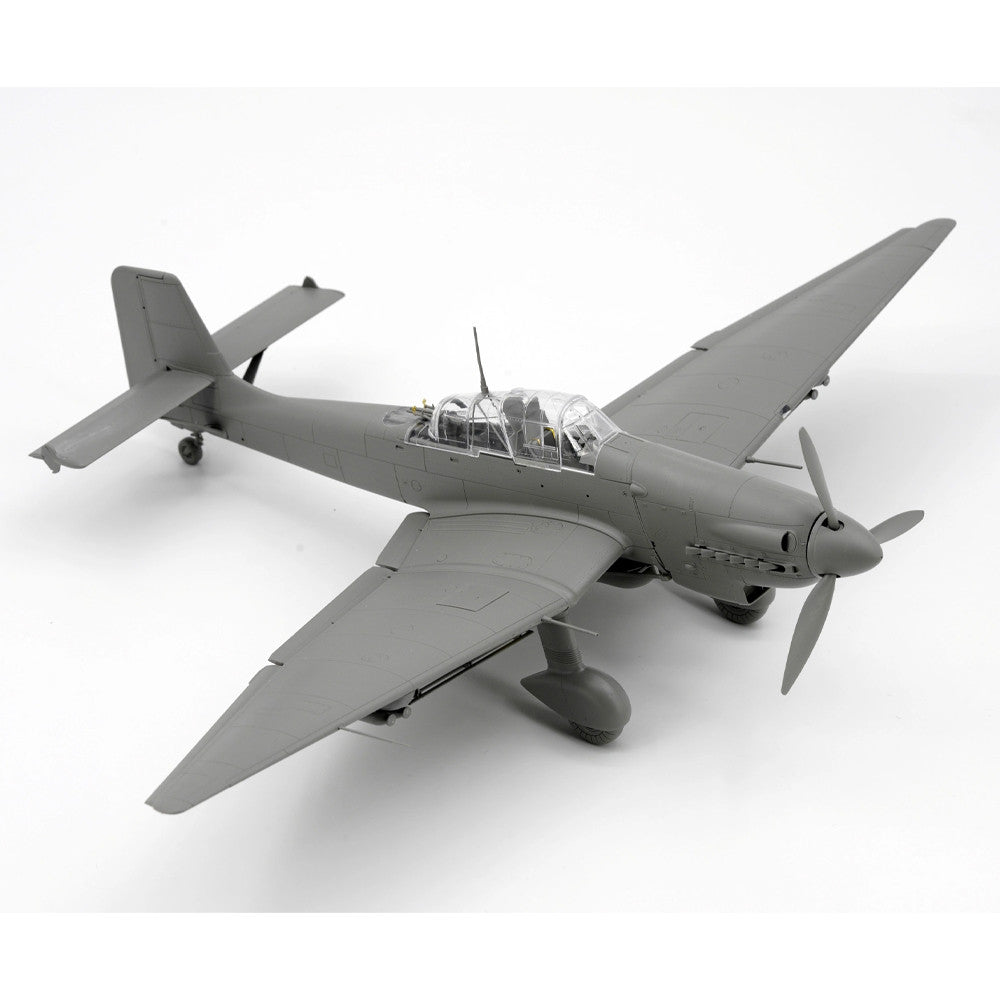ScaleCraft Studios
Border Models 1/35 Junkers Ju87 D5 Stuka (In Stock June)
Border Models 1/35 Junkers Ju87 D5 Stuka (In Stock June)
Couldn't load pickup availability
The History and Development of the Junkers Ju 87 D Stuka
The Junkers Ju 87, more commonly known as the Stuka (short for Sturzkampfflugzeug, or dive bomber), was one of the most iconic aircraft of World War II. Designed as a precision dive-bomber, it played a crucial role in the early Blitzkrieg campaigns. The Ju 87 D series was an improved variant, featuring a more powerful engine, better armor, and increased payload capacity.
Origins and Development
The development of the Ju 87 began in the early 1930s, with its first flight in 1935. Designed by Hermann Pohlmann and built by Junkers, the aircraft featured distinctive inverted gull wings and fixed landing gear. Its most famous feature was the wailing siren, known as the Jericho-Trompete, which created an intimidating psychological effect on enemy troops.
By the time the Ju 87D variant was introduced in 1941, improvements had been made to address the aircraft’s vulnerabilities. The D-model was fitted with the more powerful Jumo 211J engine, providing 1,410 horsepower, which increased its speed and operational range. Additional armor was added to protect the crew and vital components, and the payload was increased to 1,800 kg (3,970 lbs), allowing it to carry a greater variety of ordnance.
Technical Specifications and Design Features
The Ju 87D retained the dive-bombing capabilities that had made earlier versions so effective but was also adapted for ground-attack missions. Key design features of the D-series included:
-
Strengthened airframe and improved armor protection
-
A more streamlined fuselage and redesigned engine cowling
-
Twin MG 81Z machine guns in the rear cockpit for defensive purposes
-
Removal of the Jericho-Trompete siren to reduce drag and improve performance
Despite these improvements, by 1943, the Stuka was increasingly vulnerable to enemy fighters, leading to its gradual replacement by aircraft like the Focke-Wulf Fw 190 in the ground-attack role.
Combat History and Legacy
The Ju 87D saw extensive service on the Eastern Front, where it proved effective against Soviet tanks and fortifications. It was also used in North Africa and the Mediterranean, though its slow speed and lack of maneuverability made it an easy target for Allied fighters.
Although outdated by the later years of the war, the Ju 87 remained in service in various roles, including night harassment and tank-busting missions using the specialized Ju 87G variant, which was equipped with twin 37mm cannons.
Border Model 1/35 Ju 87D Stuka Kit
Border Model’s 1/35 scale Ju 87D Stuka kit offers an impressively detailed representation of this iconic aircraft. This large-scale kit allows for a high level of detailing, making it a must-have for serious modelers.
Features of the Kit
-
Highly detailed fuselage and cockpit interior
-
Full engine detail with optional open panels
-
Movable control surfaces, including flaps and ailerons
-
Photo-etched details for added realism
-
Armament options including bombs and underwing gun pods
-
Clear canopy with optional open position to display interior details
Build and Display Potential
The 1/35 scale makes this kit a unique addition to model collections, as it is closer in size to armor model kits, allowing for impressive diorama potential. The detailed engine and cockpit mean the model can be built with open panels to showcase its inner workings.
Conclusion
The Junkers Ju 87D Stuka remains one of the most recognizable aircraft of World War II, and Border Model’s 1/35 scale kit offers a fantastic way to appreciate its engineering and combat history. Whether displayed as a standalone piece or part of a larger diorama, this kit provides an excellent opportunity for modelers to bring the legendary dive-bomber to life.
Share






